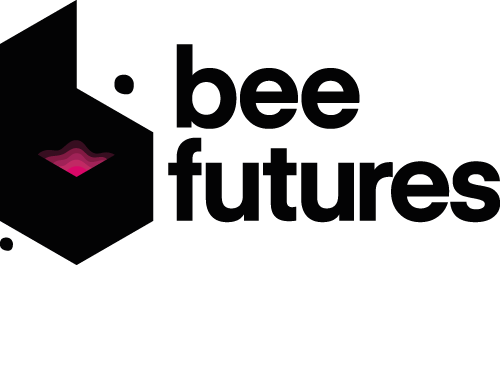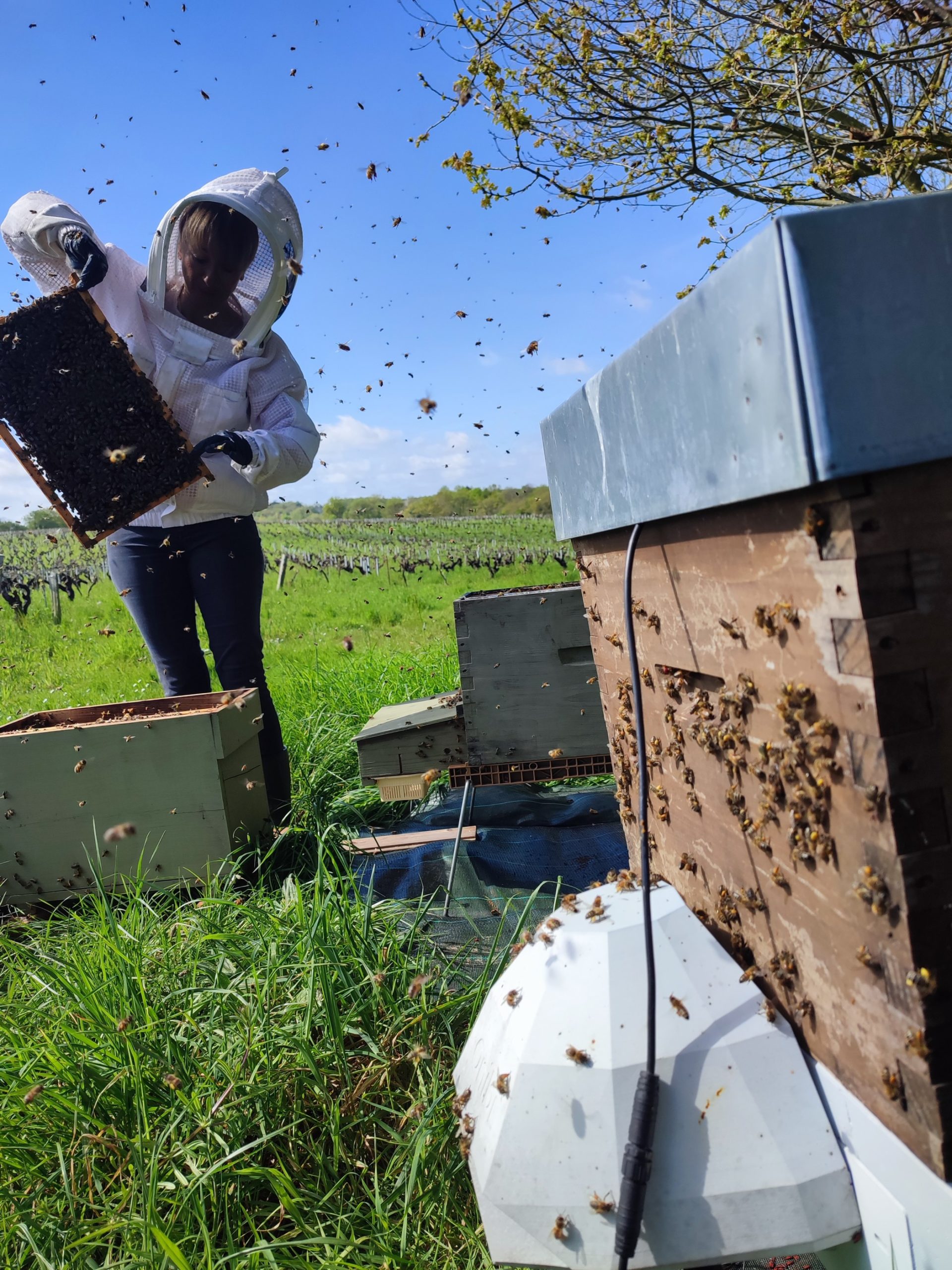Supporting nature in the R&D process: A new perspective on Biomimicry
Series on AI in beekeeping, episode 2
A few weeks ago, I accompanied Muriel, our head of beekeeping at Beefutures, in France throughout the vineyards around Nantes, trying to assist her during the kick-off of the beekeeping season. With three hives at each site, including Onibi watch, and pollen traps, we are biomonitoring several areas south of the Loire, in an area famous for its Muscadet white wine. Following my tireless guide over three intense days, I could observe, learn, and gain hands-on experience. It was also an excellent opportunity to reflect on the links between technological research such as that of Beefutures– in which the biomonitoring project also has a practical testing role– and nature, for which Muriel showed the deepest respect and care. She shared with me her feeling privileged to be able to take care of the bees and follow their rhythms, not having intensive honey production as a priority. But, I wonder, is it possible to maintain this reciprocal relationship with nature even during the research phases in R&D labs? It is true that in Nantes, we always have half a dozen hives in the laboratory garden, behind a large window, but much of the R&D process is done behind screens, or assembling components on worktops. There, the authenticity of such a relationship loses that immediacy so perceptible in my experience in contact with beehives in the French countryside.
I addressed this concern in a recent academic article (that you can find here), where I considered a research and development practice for new technologies called ‘biomimicry’. This is an R&D strategy that states being inspired by natural mechanisms would lead to inherently positive solutions for the natural environment. Its appeal to a ‘Follow nature!’ imperative as an intrinsic value complicates a critique of this strategy, which I have nevertheless considered necessary. I have argued how this line of research can be formulated differently, one that does not reduce nature to a resource of ideas to be extracted for human benefit but can also reverse these relationships. In this view, the characteristics of one species, including humans, can be applied to a technology that benefits another species, including humans. This could compensate, at least in part, for the limitations of natural evolution in keeping pace with climate change, allowing one species to obtain a ‘phenotype’ from another, for instance, when its habitat is changing into that of the mimicked species. This engineering ‘cross-pollination’ is not a bioengineering process but rather consists of natural-technological hybrids that can be applied to more or less controlled contexts – starting from agriculture.
Indeed, we find this redefinition of biomimicry in certain aspects of Beefutures’ technologies. A clear example is the thermal treatment against varroa, where bee colonies benefit from a mechanism akin to human and other mammalian fever. Another case, equally interesting, is the pioneering use of artificial intelligence, originally imitating human intelligence, in the algorithms that run the robotic hive, thus facilitating honeybees’ adaptation to new environmental circumstances. Beyond these specific technologies, this framework could offer a clear R&D direction according to which following nature may not be enough. We should also support it, especially in the challenging times ahead. Thinking back to this article, therefore, I believe that a balance between the extraction of resources or knowledge from nature and reciprocal support towards it may not be limited to the direct relationship between a well-intentioned beekeeper like Muriel and her bee colonies. A careful redefinition of the desires, concepts, and narratives behind innovation strategies could, in fact, extend this virtuous practice into the R&D laboratory. That could reinforce the examples mentioned above with the aim of a virtuous symbiosis and co-evolution of our technological existence and life in the beehive – since we are both facing the current environmental threats. Or, at least, that should be the challenge.
About the writer: Marco Innocenti is a researcher at Beefutures and a PhD candidate at the Panthéon-Sorbonne University and at the University of Milan, where he is part of “PhilTech – Research Center for the Philosophy of Technology”. He is a Visiting PhD candidate at the Philosophy Group at Wageningen University and Research (NL), among the world leaders in Agricultural and Environmental Sciences.
In his doctoral thesis in Ethics of Technology, he investigates how the possibilities opened up by AI-driven automation in beekeeping redefine the role and concept of ‘nature’ in Responsible Innovation. This reflection aims to indicate guidelines for ethical innovation in AgriTech R&D labs. In this series of articles, he summarizes his research for the interest of experts and enthusiasts in this field.



